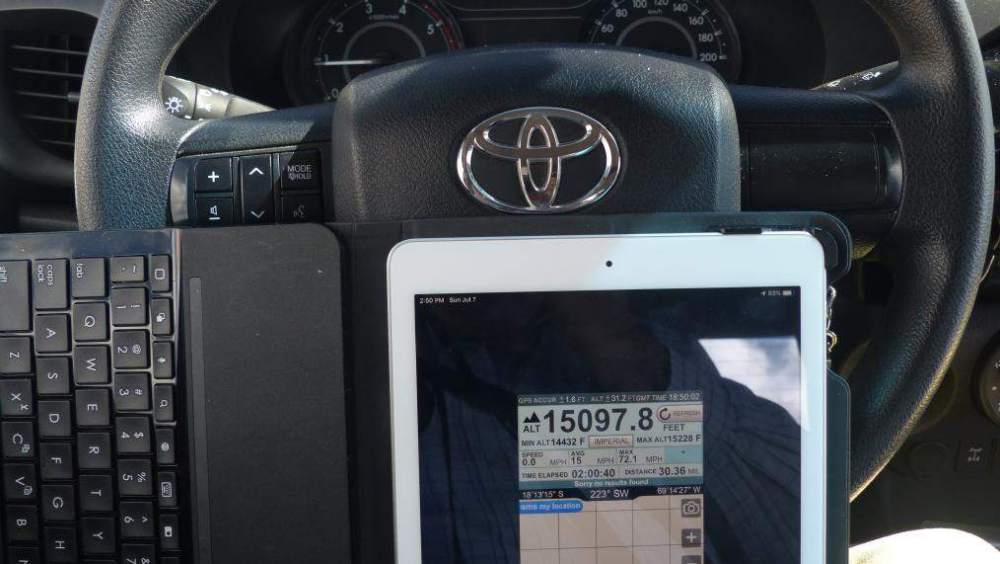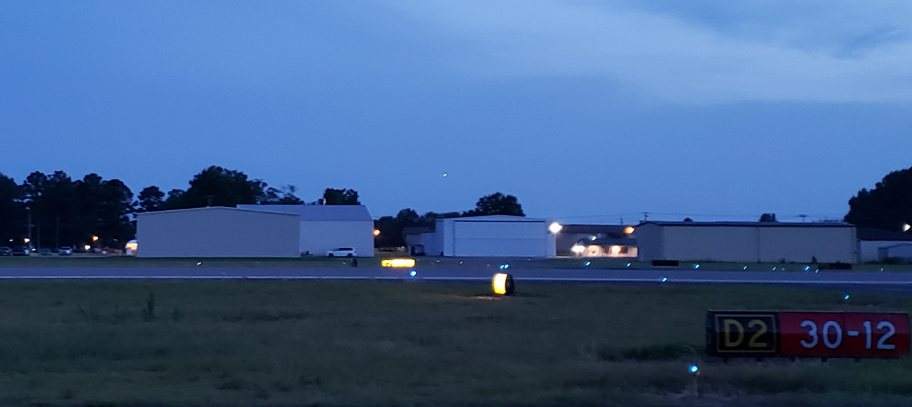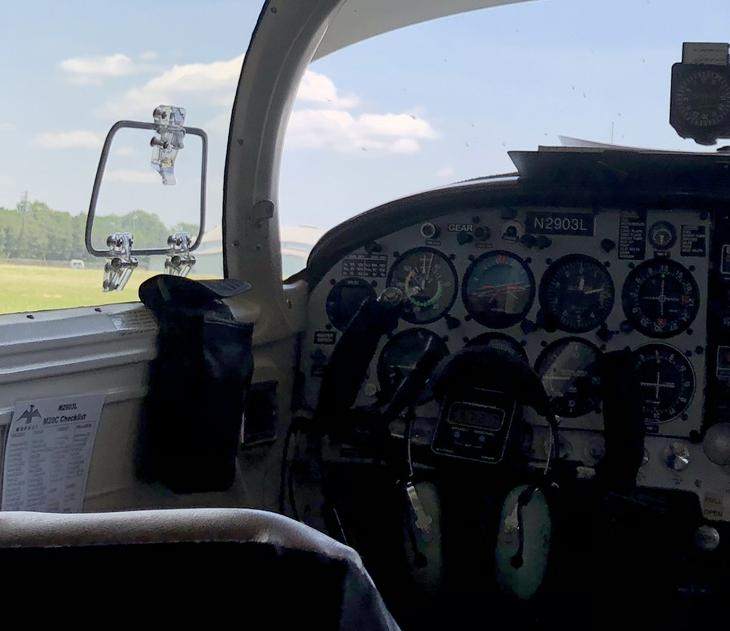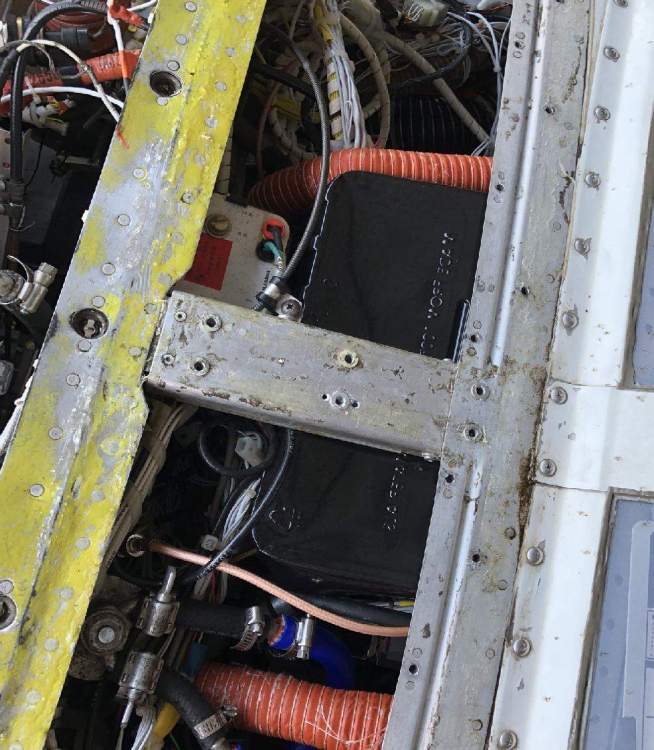-
Posts
3,186 -
Joined
-
Last visited
-
Days Won
8
Content Type
Profiles
Forums
Blogs
Gallery
Downloads
Media Demo
Events
Everything posted by 0TreeLemur
-
If you search the interwebs using: "av-20s site:mooneyspace.com" and you will find a lot of commentary similar to that by @gsxrpilot
-
-
I really enjoyed the first video. Congratulations Cap'n on a fantastic and fulfilling career. The "Livin' the Dream" series not so much... Maybe I"m glad I went to truck driver skool instead...
-
Jeremy, here's a summary of what I did with the somewhat antiquated panel in my bird after we acquired her. The cost was not too great because the only upgrade was installing a used 430W and transponder for ADS-B out. At least I didn't have to deal with Loran...
- 105 replies
-
- 1
-

-

M20 short body guide, gotchas, and mission advice
0TreeLemur replied to DartMan's topic in Vintage Mooneys (pre-J models)
Stall speed of Cessna 182 is 50 kt. A M20C stops flying at about 56kt in a full stall with full flaps, but it takes a bit of float to get it to the stalling AoA unless you approach real (too) slow. Your 2300' grass strip would scare the heck out of me. Disclaimer: I've got about 200 landings in a Mooney M20C, none on grass. -
In a model C Mooney, nothing is easier to ignore than that six-pack of tiny little gauges over near the co-pilots' left kneecap. I think there is a reason why later models moved those gauges front-and-center. In the original C the ergonomics of the Garwin gauge cluster is terrible. With a modern engine monitor placed in a more visible location and with its greatly improved legibility, I can include it in my scan without having to put my head in the co-pilot's lap. The use of numbers and bar-charts eliminates parallax effects in interpreting gauge needles. I can see important stuff, such as that time that I was told to expedite my departure, skipped a few items on my checklist, and started to take off with lean mixture. The engine monitor EGT bars turned yellow and I pushed in the mixture. I'd say that is perhaps a good example of that engine monitor "earning its keep". Oh, and a certified engine monitor allows you to remove a bunch of antique gauges, and keep all the flammables firewall forward. During a recent airshow I spied pressure transducers in the nacelle of a DC-3. I asked the maintenance guy about it- he said the pilots love not having fuel dripping on their shoes when some fuel pressure fitting starts leaking. Antique taildragger maintenance guy says that he really likes having a modern engine monitor...
- 105 replies
-
- 3
-

-
I installed the AV-20-S. Here are the pluses. It can display OAT, buss voltage, and TAS on the main screen. I agree with @gsxrpilot that the timers are nice. It has two user timers, plus an "engine run time" timer that starts counting when the buss voltage exceeds 13-ish V, which occurs during runup in a/c with generators. It also has a "flight time timer" that starts when it thinks the pressure differential across the pitot and static lines is enough for 40 kias. I use that one to time when I switch fuel tanks. It also has a mems-based attitude indicator that I find to be well in agreement with my vacuum driven one. I bought it for that feature because a good timer with a backup AI is cool. On the other hand, in the less-than-cool category, it has an OAT sensor that uses the DAVTRON temperature probe. It is calibrated using a menu-based "trim" setting. When I calibrate the temperature probe vs. whatever temperature source I can obtain at altitude, it seems consistent. But, when I compare the indicated TAS vs what the Garmin 430W tells me is the TAS when I change the temperature, pressure, and CAS on that menu, the AV-20-S indicates 4-6 kts higher. The Garmin 430W agrees with three-course groundspeed method of making TAS measurements within about 2 kts. So, whatever algorithm the AV-20-S is using is not that accurate. I have found that I can adjust the temperature "trim" setting to get the TAS to match, and then the temperature is off. Something is not right in the TAS calculation based on the air temperature. It advertises having a "probeless AoA sensor". In my experience, the probeless AOA indication on the AV-20-S is useless. In theory it should work at 1g based on measured V, dP/dt and nose angle relative to the horizon based on the mems AI. However, as g deviates significantly from 1.0, due to turning or some other acceleration, another variable is introduced to the equation that the probeless AOA sensor cannot resolve related to angular accelerations. I contacted the company and was told something to the effect that the probeless AOA has not yet been calibrated in a Mooney. I think that was a polite way of saying "fuhgeddabouddit", so I have. I turned it off because it was distracting. It has the ability to serve as a g-meter, but since I don't do aerobatics and I know to fly in the green arc when it is rough, I don't ever use it. My 2-cents worth. I'm glad I have it for the useful timers and backup AI with 30-minute battery life. The other functionality is of questionable utility in my opinion as a rank private pilot. YMMV. I do not recommend it for its purported ability to accurately indicate AOA.
-
Ok, I'm dreaming. Just in case- assuming a set of split rear seat backs from a 67E will install and fit in a 67C, I am looking to buy them. Impossible dream?
-
Resurrecting this thread because I have need to find a good source of certified upholstery material with burn certs. I have neither time or desire to get in the flame testing business. A long-term search of the interwebs turns up mom+pop operations that don't stock samples, or firms that seem to specialize in the interior of multi-million $ jet-propelled time machines. I see that Aircraft Spruce stocks vinyl. I need a good source of fabric. We're going to put sheepskins on the two front seats, so they will be upholstered entirely in vinyl. The bench back seat should be mostly fabric. Our a/c will ultimately be painted red over white, kind of like @Bob_Belville's bird that looks soooo good. So I'm thinking we need some kind of redish/brown fabric and tan vinyl. Finding a site to buy the fabric has proven elusive. Any suggestions? Thanks in advance.
-
Yes, @Yetti raises a good point. Mooneyspace has a 1980's library era search engine syntax that is really cumbersome to use to find anything. It seems that one member, and only one member, has mastered it. It is not @Yoda but @carusoam. You can seek out his knowledge. Alternatively, you can do as suggested and do this in google (without the quotes): " LED landing light site:mooneyspace.com" Answers you will find. Old threads you will revive.
-
Our a/c has installed one Aero-Lites Sunsetter PAR 46. Four of the 18 LEDs have light dispersal gratings over them which makes it a combination landing/taxi light. It is so much safer when taxiing than the tightly focused incandescent energy waster it replaced. The picture below was taken when I was about 3-4 miles from the airport at dusk. I always fly with it on.
-

Cockpit organizers / coffee holders
0TreeLemur replied to lithium366's topic in Vintage Mooneys (pre-J models)
The prior owner installed this small satchel using two of the screws that hold the plastic window liner in place just above and forward of the pilot's left hand arm rest. It is a handy place to keep sunglasses/readers. -

Cockpit organizers / coffee holders
0TreeLemur replied to lithium366's topic in Vintage Mooneys (pre-J models)
I use this for the U.S.: http://visitedstatesmap.com/ For Australia, I rolled my own from a gif of the country. I made them both to scale more-or-less. -
Welcome Jeremy. A new engine monitor makes a great early upgrade- a certified one gives you the ability to take out a lot of old legacy instrumentation, and keep all the flammables forward of the firewall. They don't cost that much and are relatively painless to install in my experience with the support of a good A&P IA. Frees up a bunch of panel space too.
- 105 replies
-
- 2
-

-

Vacuum pump failed (at taxi in)
0TreeLemur replied to Sean S's topic in Vintage Mooneys (pre-J models)
@David Lloyd thanks for that. With a new IR, I was curious if there are noticeable symptoms. I agree that your wife was really on the ball with that one. I installed the Aerovonics AV-20 timer, which includes a lot of lagniappe, one bit of which is a MEMS based attitude indicator that serves as a backup to the vacuum AH, and as a 30-minute battery. An expensive timer, but cool to have in case of a vaccum failure. In my experience it agrees with the analog AH quite well. -

Vacuum pump failed (at taxi in)
0TreeLemur replied to Sean S's topic in Vintage Mooneys (pre-J models)
Hey, tell us how you noticed. Was there noise, vibration, or just instrument misbehavior? Just curious what signs you had, especially while taxiing. Thanks! -
"Oversquare" is an arbitrary definition, inches and rpms have nothing to do with each other. If you use m.p. in mm Hg, and rpm in radians per second, whoa boy!
-
I excitedly searched through the 1980 pdf of the Maint. Manual for this procedure. They call it the "prestall warning". A search through the entire manual using terms "prestall", "stall warning", and "stall " found no mention of this warning adjustment. Can you tell me the page number? Maybe that instruction was in an SI or SB?
-
What you say is true, and I've done a lot of stall training, including accelerated stalls. Aloft, I can make the stall horn go off all day and not actually stall. But what I'm talking about stems from my repeated observation that in landing configuration in the flare with throttle closed, my a/c does not give much warning between stall horn initiation and stall break. It has nothing to do with my pilotage. It just always happens that way. I too liked/miss the progressive nature of the Cessna stall horn. Maybe the fact that Dave Keller didn't have the flaps down actually helped him? When I originally watched that video before I knew that he didn't have the flaps down, every time I heard that stall horn I thought "this is it". In my a/c with flaps/gear down and engine not producing power, when the stall horn goes off, it is really close to a stall. That's all I'm saying.
-
I guess the 360 in Brian Schiff's example builds in a bit of conservatism, but then he recommends multiplying lost altitude by another factor of safety of 1.5. We all want factor of safety, but in my case the propensity to land +-30 degree off straight ahead is so strongly ingrained that that is most certainly what I'll try to do. Watching Dave Keller's video, every time the stall horn sounded I felt ill. Back in my 172 days I remember flaring and having the stall horn go off for what seemed like an eternity before hearing the happy chirp of the tires. In my Mooney, there are no eternities of stall horn noise. The time from horn initiation to stall in my bird is seldom more than a couple of seconds.
-
Just curious- why in the Brian Schiff worksheet is the turn a 360? Looking at the Dave Keller video, he turned approx. 225 degrees to the right then about 45 to the left to line up with the runway he landed on. But, he could have landed straight ahead off-runway without doing that last turn. That last turn to the left in terms of personal safety, was not necessary. Risking an approach stall to save the insurance company some money is not my idea of a worthwhile activity. BTW- in the category of "brushes with greatness" Dave Keller's 1967 M20C was the next one off the assembly line after mine. I wonder if my engine is destined to fail in the same way...
-
I made a roof for my radio stack using a disposable paint tray liner. It hemmed in by the SCAT hoses on the sides, frame beneath the glare shield, sloping steel tubular frame members, and the starter vibrator box. It slopes forward about 1". There is a gap between the forward end of the rain shield and the starter vibrator.
-
Less likely, but it could also be a plugged fuel intake strainer in the right tank. The finger strainer attached to the fuel intake tube in many of our birds suffers from an excess of tank sealant, which partially blocks the screen. Add a little bit of debris such as flakes of sealant, corrosion, paint, etc. it isn't too hard to block the screen. The loss of pressure through the screen would show up as a reduction in fuel pressure.
-

Sealing cowl/avionics bay covers against water?
0TreeLemur replied to justincarter's topic in Vintage Mooneys (pre-J models)
Here is a separate but related thread that I've been following. @Hector recommends something similar and shows photos of his installation that I think will work much better than the "La Brea Tar Pits in a Box" solution.







